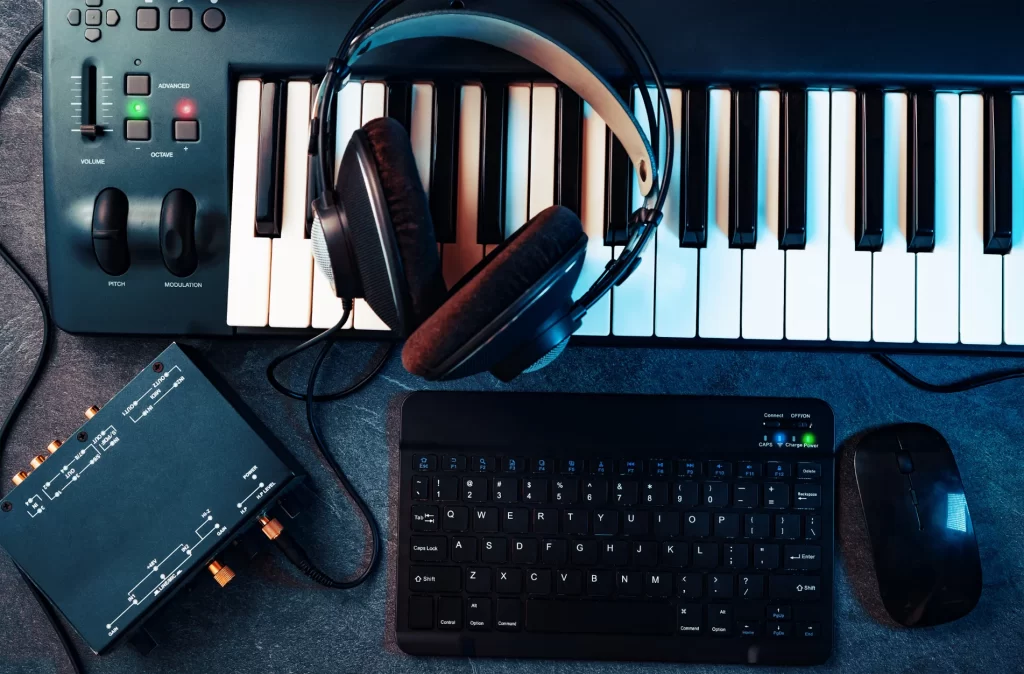In the intricate labyrinth of music production, two pivotal stages—mixing and mastering—stand as the cornerstones of sonic refinement. But what sets them apart, and why is it crucial to differentiate between these integral processes? Further down we will demystify the disparity between mixing and mastering, illuminating their unique roles and find our on how they collectively shape musical creations.
Mixing: Sculpting the Sonic Landscape
Mixing is the foundational step in crafting a musical masterpiece. It’s the art of blending individual elements—vocals, instruments, effects—into a harmonious whole. This intricate process ensures that every component coexists in perfect balance, resulting in a well-defined sonic landscape that captivates listeners.
Key Aspects of Mixing
- Balance and Clarity: Mixing engineers meticulously adjust volume levels, ensuring that no instrument overpowers another. This balance enhances clarity, allowing each element to shine with distinctiveness.
- EQ Sculpting: Through equalization (EQ), frequencies are shaped to accentuate desired tonal characteristics and eliminate unwanted resonances. This process polishes the sonic spectrum, ensuring no frequency competes for attention.
- Spatial Arrangement: Panning and spatial effects are employed to create a three-dimensional soundscape. These techniques place each element in its own spatial niche, lending depth and dimension to the mix.
Mastering: The Final Flourish
Mastering is the last creative step before distribution, refining the overall sound of your music. It’s the process of applying a consistent sonic identity to a collection of tracks, ensuring cohesiveness across an album. Mastering engineers wield precision tools to prepare your music for playback across various mediums.
Crucial Aspects of Mastering:
- Tonal Consistency: Mastering engineers harmonize the tonal balance of each track in the collection, ensuring a seamless listening experience. This consistency prevents jarring transitions between songs.
- Dynamic Enhancement: The dynamics of the tracks are meticulously controlled, enhancing softer passages for audibility and elevating energetic moments for impact.
- Format Optimization: Tracks are optimized for specific distribution formats—streaming, CDs, vinyl—to guarantee optimal playback quality across diverse platforms.
Why the Difference Matters:
- Creative vs. Technical: Mixing involves artistic decisions that shape the character of individual elements. Mastering focuses on enhancing the overall sonic quality and preparing tracks for distribution.
- Micro vs. Macro: Mixing zooms in on the intricate details of individual tracks. Mastering adopts a macro perspective, considering the entire collection and its cohesion.
- Culmination of Quality: Together, mixing and mastering ensure your music achieves its full potential. Mixing creates the raw canvas, while mastering applies the finishing touches that refine the masterpiece.
In Conclusion: The Harmonious Duo
Mixing and mastering, though distinct, are intrinsically intertwined. They’re two sides of the same coin, each contributing to the sonic excellence of your music. Mixing shapes the individual elements, while mastering ensures they come together as a cohesive unit. Understanding this difference empowers you to appreciate the depth of expertise required at each stage, ultimately leading to music that resonates with listeners on a profound level.



